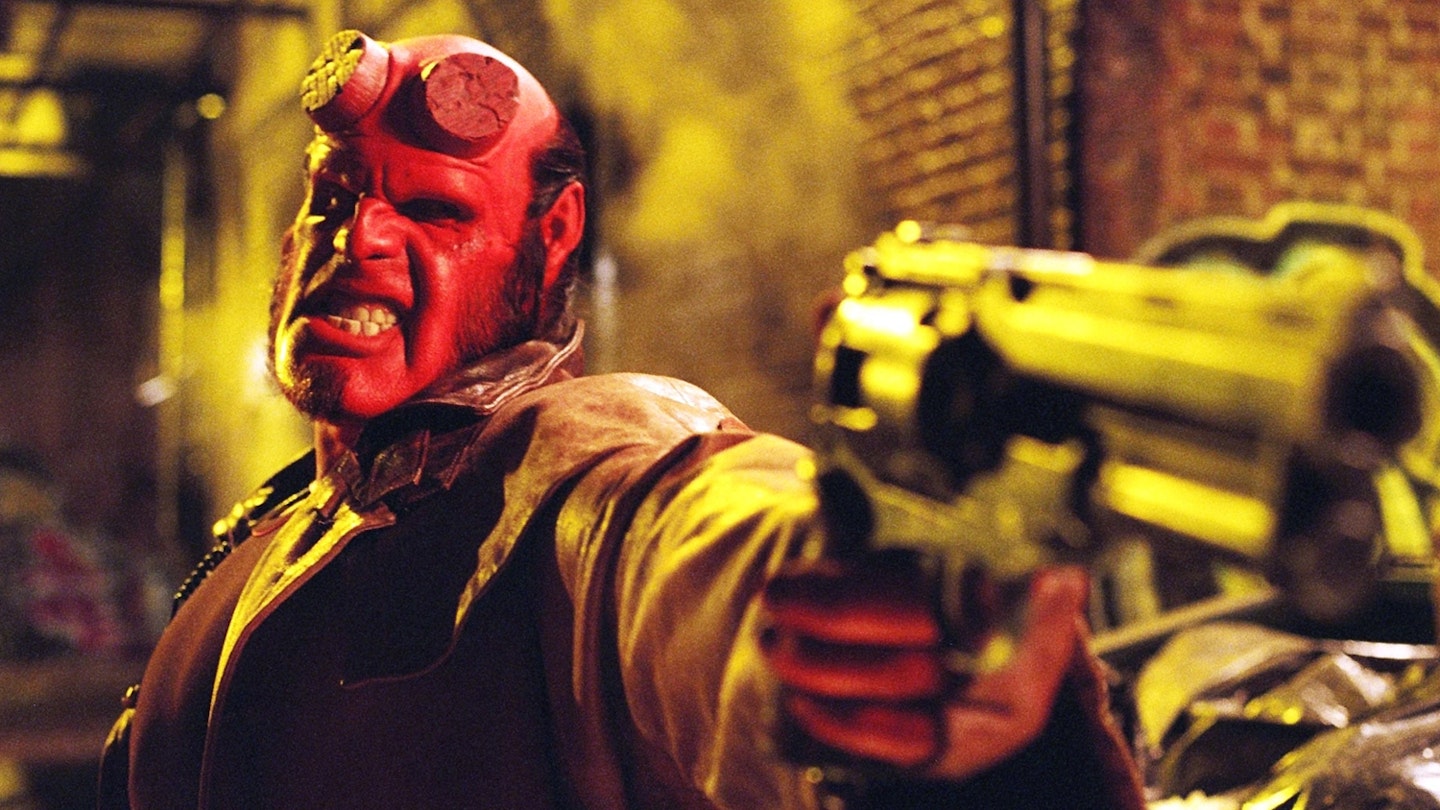Nobody loves monsters like Guillermo del Toro. The Oscar-conquering Mexican auteur has, over the course of two decades, not only changed the face of fantasy-horror, delivered the definitive fairytales of our age, and blurred the lines between so-called ‘high’ and ‘low’ culture – he’s also created some of the most iconic movie monsters of all time. His fascination and sympathy for everything beastly has made him one of the most enduring directors of today – creating elaborate fantasies that explore the depths of the human condition, with big blockbuster chops to match. From bugs, to ‘bots, to bloodsuckers, to blood-red ghosts, del Toro’s films look outside to look within, all the while drawing influence from classic literature, black-and-white B-movies, comic books, and pulp fiction.
To celebrate the release of his latest (and very first animated) feature, the beautifully-crafted Guillermo del Toro’s Pinocchio, Empire’s biggest del Toro-heads put their, well, heads together to duke it out over the director’s greatest works – and it was tough, since there’s not a dud in the pack. There is, though, a selection of modern masterpieces all jostling for the top spot – works of pure emotion, imagination, and technical mastery. Really, if trying to rank del Toro’s films proves anything, it’s not which one is actually the best: it’s how much he’s a pure force for good in the filmmaking landscape. Long may his beautiful, terrible monsters reign.
Every Guillermo del Toro Movie, Ranked
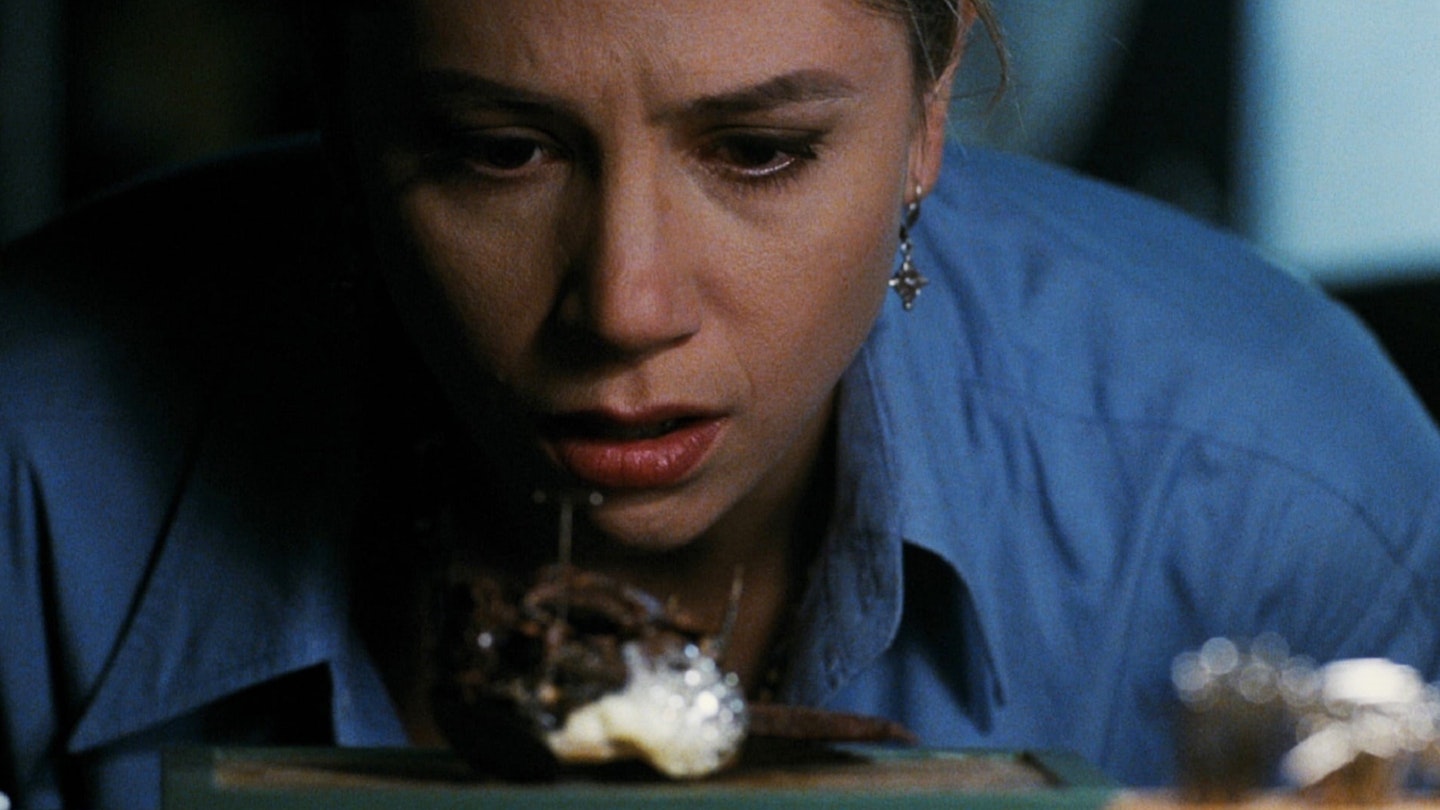 1 of 12
1 of 1212. Mimic (1997)
Right from the start, it was clear that del Toro would oscillate between arthouse-inflected indie fare, and bigger Hollywood productions – off the back of his debut Cronos, he teamed with Miramax to make a mid-budget creature-feature. His killer-bugs-in-the-sewers tale – anchored by Mira Sorvino and Jeremy Northam as scientists pursuing their genetically-engineered progeny in the tunnels under New York City – is perfectly solid, clearly imbued with his love of creaky monster movies and crafted with the same care he always displays. But its production was far from smooth – del Toro clashing with the Weinsteins, nearly being fired, and being denied final cut on the theatrical release. He later described it as “a horrible, horrible, horrible experience”, though he eventually released a Director’s Cut that largely restored his original intentions. Watched now, it’s a bug-load of gooey, gory fun, if far from essential.
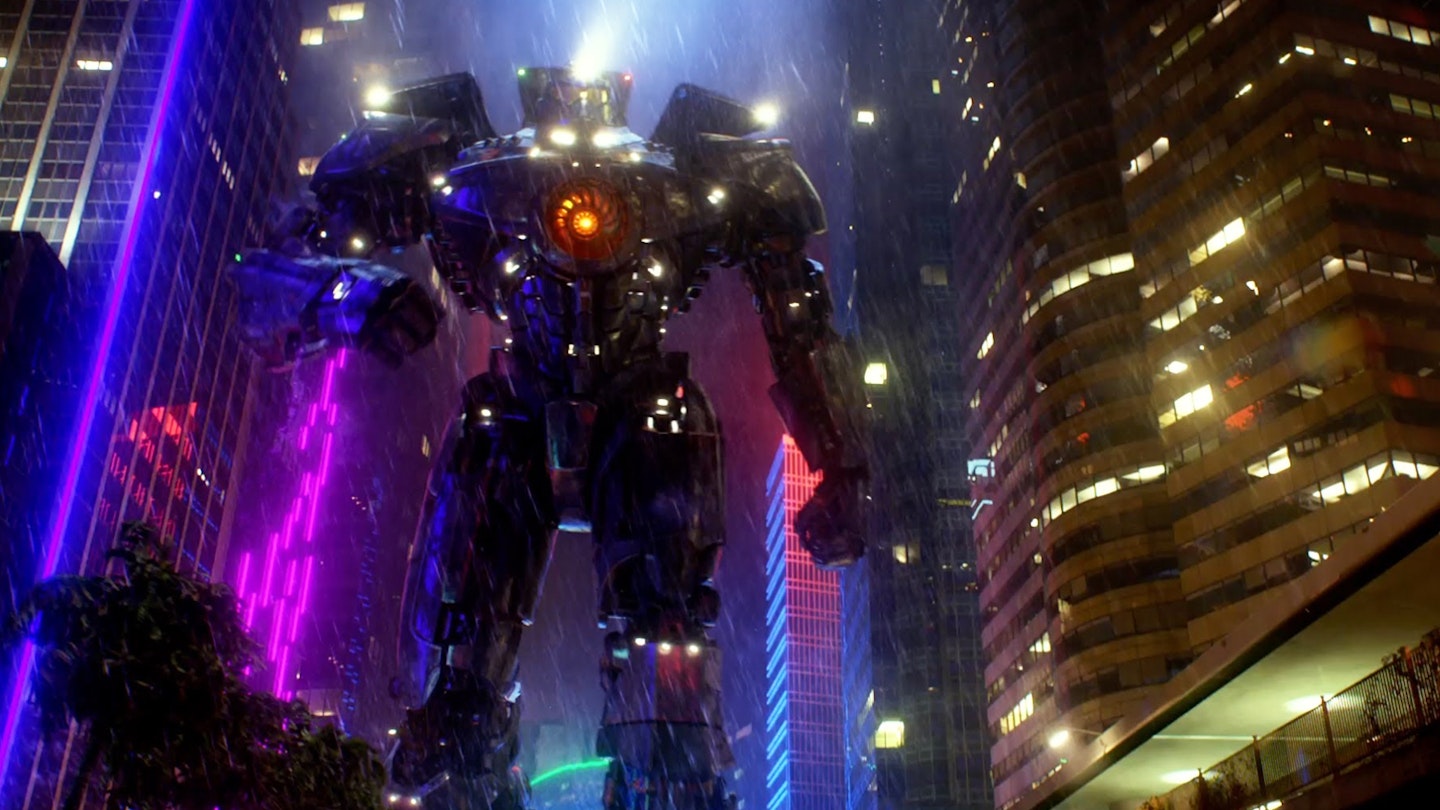 2 of 12
2 of 1211. Pacific Rim (2013)
Take this as the true power of del Toro – even his glorious trash is high art. If monsters-versus-human-piloted-robots blockbuster Pacific Rim is, by design, not his most sophisticated work, it’s still created with the same passion and craft that he brings to his more intimate fare. This time, it’s a deep love of kaiju movies and fine art (no, really – Goya’s ‘Colossus’ was a touchstone) that coalesces into technicolour brawls of monster and machine. That unabashed breakfast-cartoon-on-steroids flair (Idris Elba’s Stacker Pentecost is “cancelling the apocalypse!” Ron Perlman is a red-suited gangster called Hannibal Chau!) might be divisive, but it feels like the point – an explosion of kid-Guillermo’s obsessions, realised on the big screen with the biggest budget possible. All the rock-‘em-sock-‘em fun comes at the expense of top characters, with Charlie Hunnam’s Raleigh Beckett playing a little one-note – but the Kaiju creatures and Jaeger ‘bots are the true stars here. And they really know how to put on a show.
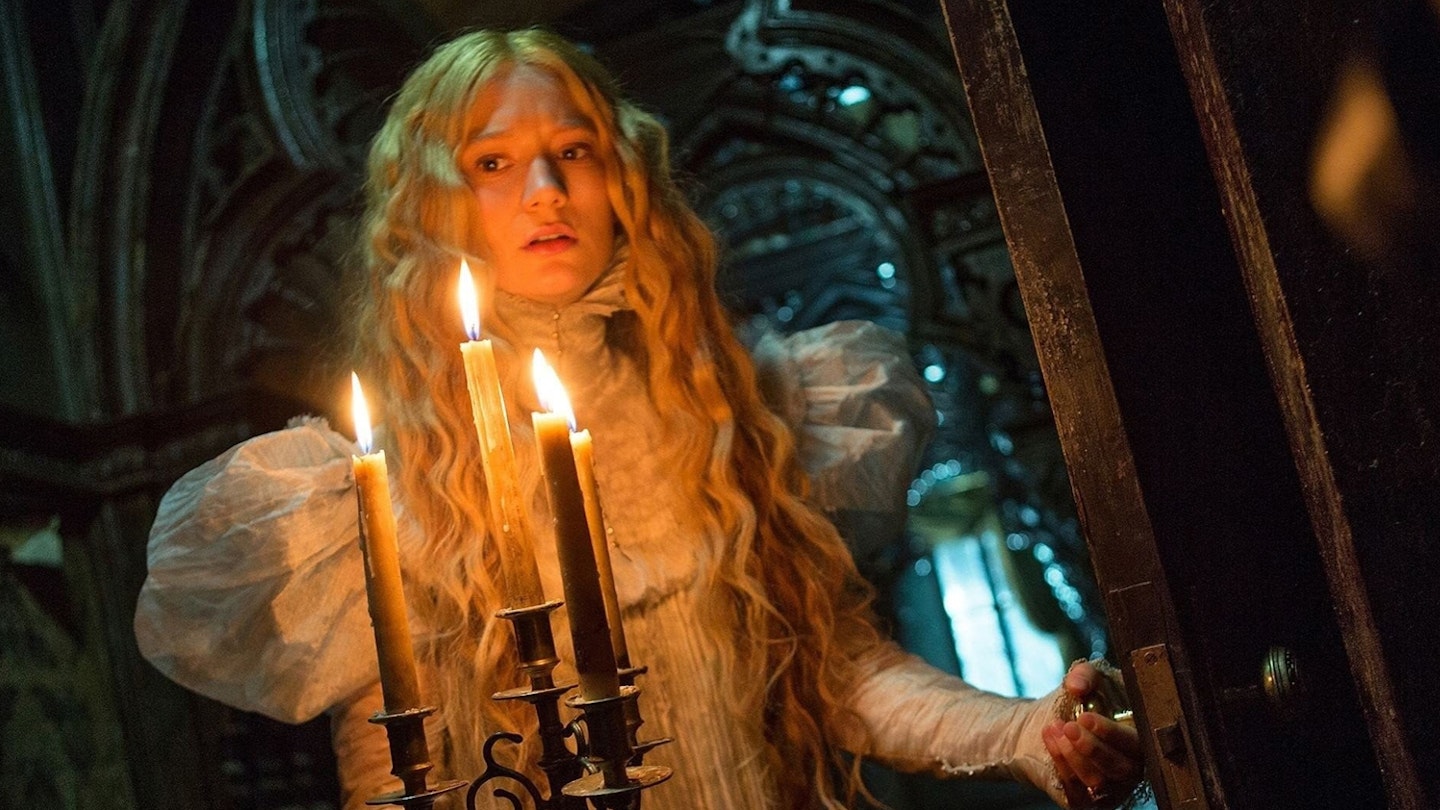 3 of 12
3 of 1210. Crimson Peak (2015)
Appropriately enough for this most novelistic of del Toro creations, Crimson Peak isn’t a film to judge by its cover. Marketed as an all-out spook-tastic horror movie, the filmmaker always pitched it instead as a gothic romance – Crimson Peak is less a straight-up monster-mash than Jane Eyre with actual ghosts, tapping into 19th Century literary traditions for an exploration of seductive dangerous men, crumbling aristocracy, and secrets that refuse to stay buried. Literally. Tom Hiddleston is perfectly-cast as tall, dark, and super-shady British baronet Sir Thomas Sharpe, who lures Mia Wasikowska’s America wannabe-author Edith to his spooky-as-hell stately home, much to the dismay of his sister Lucille (Jessica Chastain). What Crimson Peak lacks in narrative surprise (there is no grand reveal here) it makes up for in stunning production design – dilapidated mansion Allerdale Hall is a sumptuous location for the film’s final hour, red clay oozing through the floorboards, leaves tumbling through the collapsed roof, shadows wreathing its faded glory in darkness. It doesn’t cut as deep as del Toro’s best – but it’s still destined to go down as a haunted house classic.
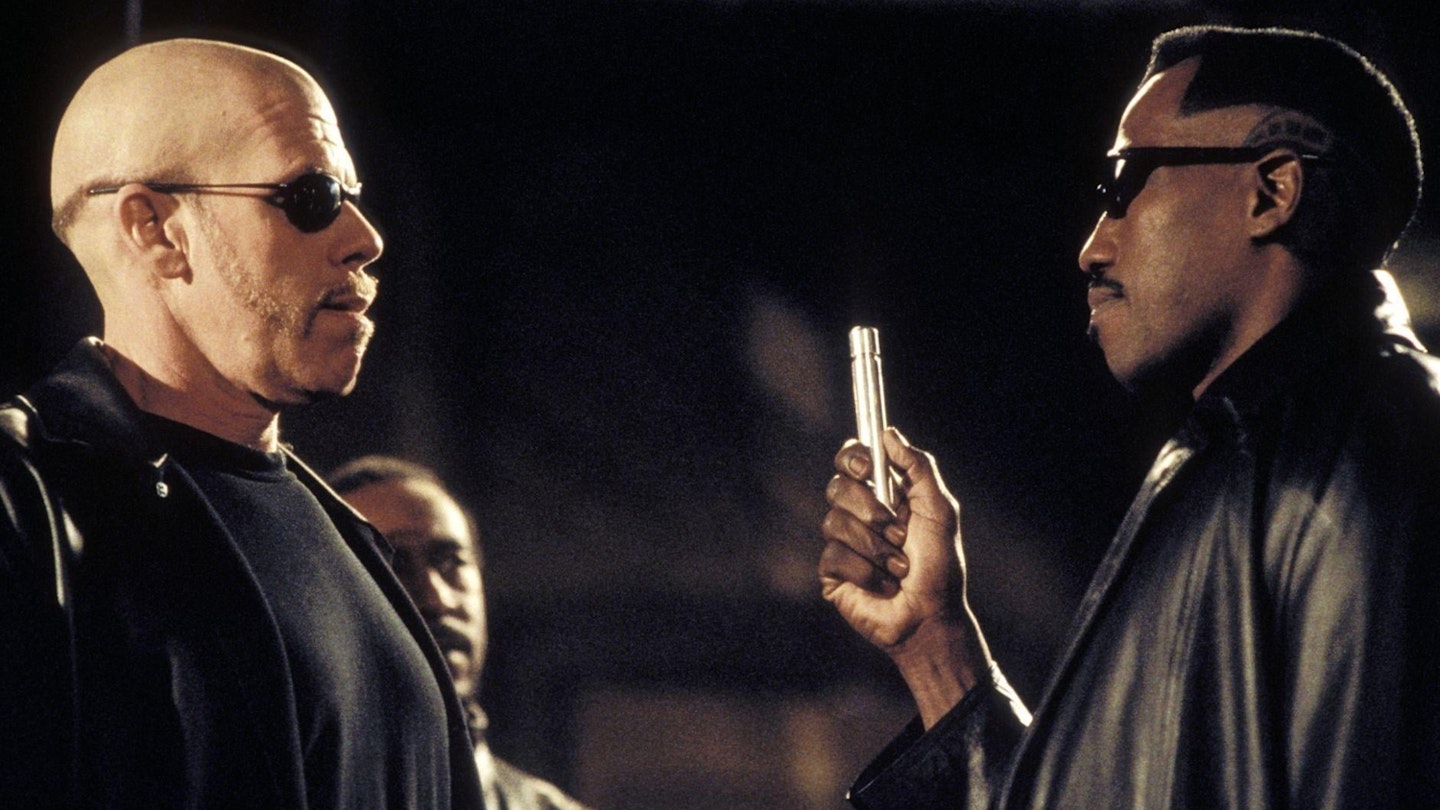 4 of 12
4 of 129. Blade II (2002)
If Blade doesn’t get enough credit for essentially kick-starting the Marvel era, Blade II doesn’t get enough credit for nailing the comic book sequel template: go bigger, go bolder, and team your hero up with his nemesis to take on an even bigger threat. For his blood-sucking Blade follow-up, penned by David S. Goyer, del Toro tempers the techno-rave instincts of the original, amps up the baroque, monster-movie mayhem, and forces Wesley Snipes’ Daywalker to work alongside an elite team of his fanged foes to battle a new mutated breed which threatens to end humanity and vampiredom alike. The Reapers are a classic del Toro creature, the bottom half of their faces opening into fearsome gaping maws writhing with tentacles, leaving oversized blood-splatters in their wake – and adding Ron Perlman into the mix as a bald bounty hunter beefing with Blade is a blast. Still, it’s arguably less memorable than the original, and sits just a rung below del Toro’s other comic book adaptations (read on).
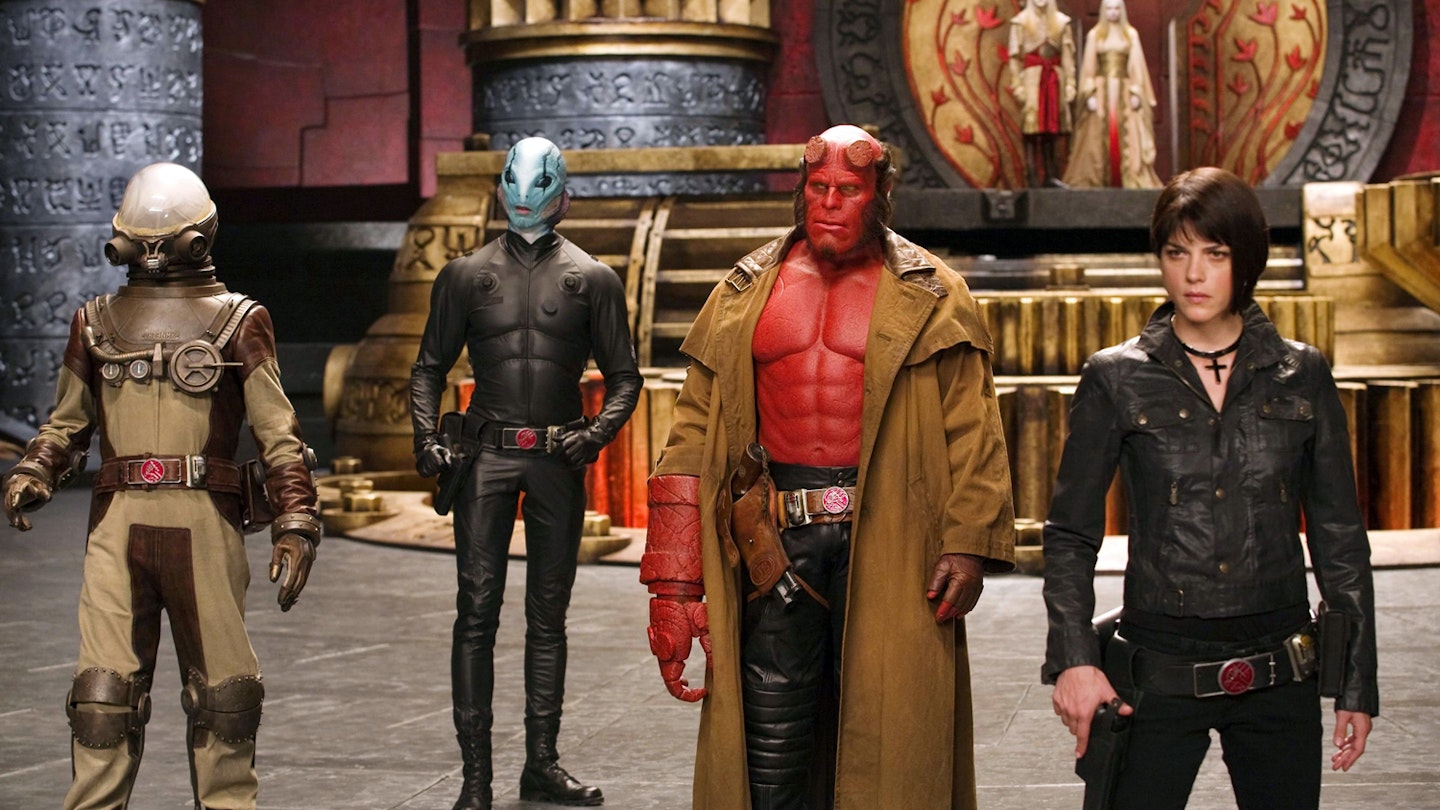 5 of 12
5 of 128. Hellboy II: The Golden Army (2008)
Question: how can you tell that a summer blockbuster is also a del Toro movie? Answer: it features a massive setpiece revolving around a marauding beanstalk-monster. Or killer tooth-fairies. Or an underground troll marketplace. For his Hellboy follow-up, the director doubled down on the del Toro-ness of it all – swapping the horror elements of the original for pure fantasy in a fairytale about vengeful elf royalty and a mythical battalion of clockwork war machines. At the same time, it’s a surprisingly sweet, daffy comedy-romance at heart, as Hellboy (Ron Perlman, still perfect) wrangles with his relationship with pyrokinetic Liz (Selma Blair), and fish-man Abe Sapien (Doug Jones) pines for elven princess Nuala (Anna Walton) – all while Seth MacFarlane hams it up as Johann Krauss, a German-accented ectoplasmic wisp in a diving bell. Fun, freaky, and wildly inventive, it’s a blast – if a little unwieldy at times. That a threequel never materialised remains a tragedy.
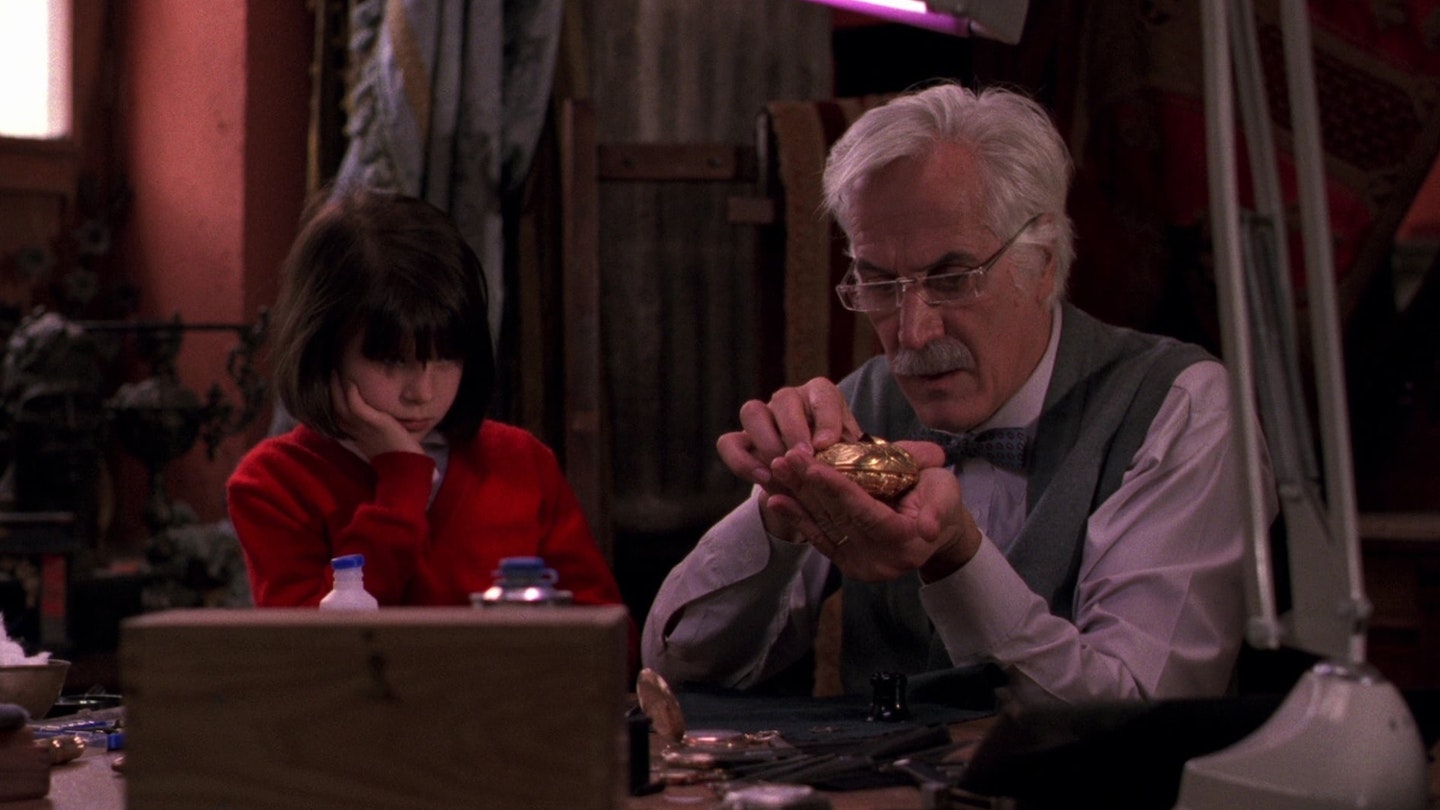 6 of 12
6 of 127. Cronos (1993)
A beguiling meditation on mortality and corruption filtered through a magical realist lens, del Toro earned his auteur spurs early with this startlingly assured first film. An inspired twist on the well-worn vampire narrative, Cronos sees ageing antiquarian Jesus (Federico Luppi) reluctantly turning undead when he succumbs to the temptation of an infernal youth-restoring device; simultaneously, terminally ill industrialist De la Guardia (Claudio Brook) lusts after the device, exploiting his oafish nephew Angel (Ron Perlman) to pursue it. Del Toro shows his reverence for genre cinema here with some inspired horror flourishes: the Scarab-shaped Cronos device and its barbed limbs provide some memorably icky Cronenbergian moments; Jesus’ third-act makeover is a clear hat-tip to the filmmaker’s beloved Universal Monster pictures and Fisher era Hammer Horror. Ultimately though, this leans more Gothic in the tragic Frankensteinian vein, and it’s del Toro’s indelible ability to find the humanity within his monsters – as shown beautifully here in the tender, loving relationship between Jesus and his granddaughter – that ultimately makes Cronos tick.
 7 of 12
7 of 126. Hellboy (2004)
Nazi occultists! An unkillable, tentacled demon dog! Half a talking skeleton on a rope! Del Toro took a red fist of doom to the typical comic book movie template in his first adaptation of Mike Mignola’s horror-fantasy comics, a perfect marriage of filmmaker and source material. The result is a blend of tones and textures – a surprisingly heartfelt father-and-devil-son story, Lovecraftian cosmic horror, and superheroic exploits from an oddball team of supernatural outcasts. Not only does del Toro deliver it all with wit and filmmaking flair, but the casting of Ron Perlman as Big Red himself proved a masterstroke – both sardonic and sincere, sulky and seriously badass, whether firing his oversized revolver in muscular, tentacular action sequences, or rekindling a tentative on-off relationship with Selma Blair’s firestarter Liz. 2019’s Hellboy reboot only proved how right del Toro and his crew got it right the first time around. Pulp rarely has this much big, red heart.
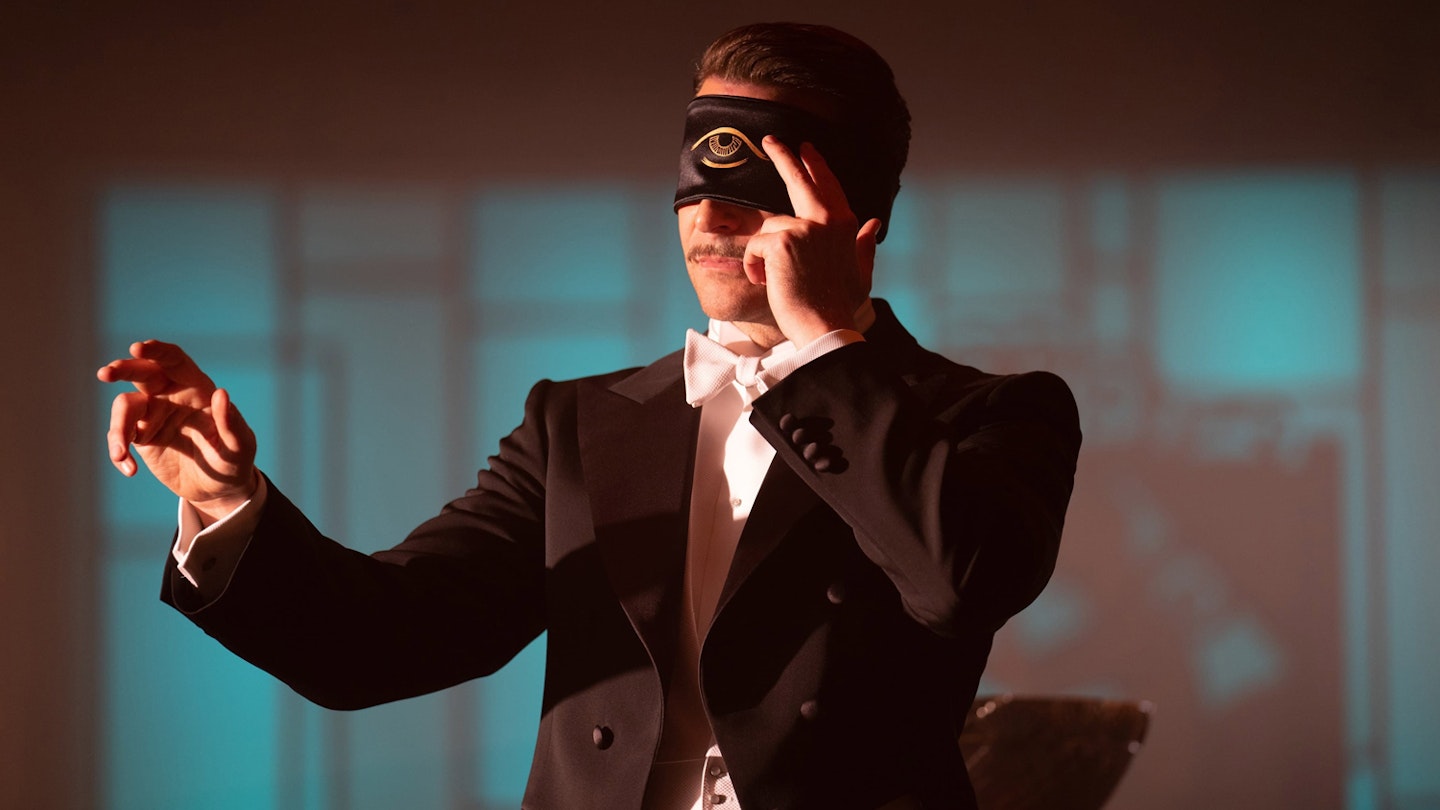 8 of 12
8 of 125. Nightmare Alley (2021)
After decades of working on geek properties, del Toro’s most recent live-action feature saw him pivot to a different kind of geek tale – a deep, dark noir story of carnival folk and the rise and fall of con artist Stanton ‘Stan’ Carlisle. An astonishing central performance from Bradley Cooper provides a through line to a two-part tale, as Stan leaves home after the death of his father and pitches up at a traveling show where he learns the tricks of the trade (and falls for Rooney Mara’s Molly), before the action moves forward a few years to New York City where Stan has established his own mind-reading act with Molly – and wrangles with Cate Blanchett’s scheming femme fatale, psychologist Lilith Ritter. With patient pacing and an unusual narrative shape, Nightmare Alley’s true power takes a while to reveal itself – but come the bloody, bruising conclusion, you’ll be floored by Cooper’s performance. Plus, it’s a visual feast in both its original colour version and the GdT-approved black-and-white edition. It might be his first film with no actual monsters – but really, it’s still full of beasts.
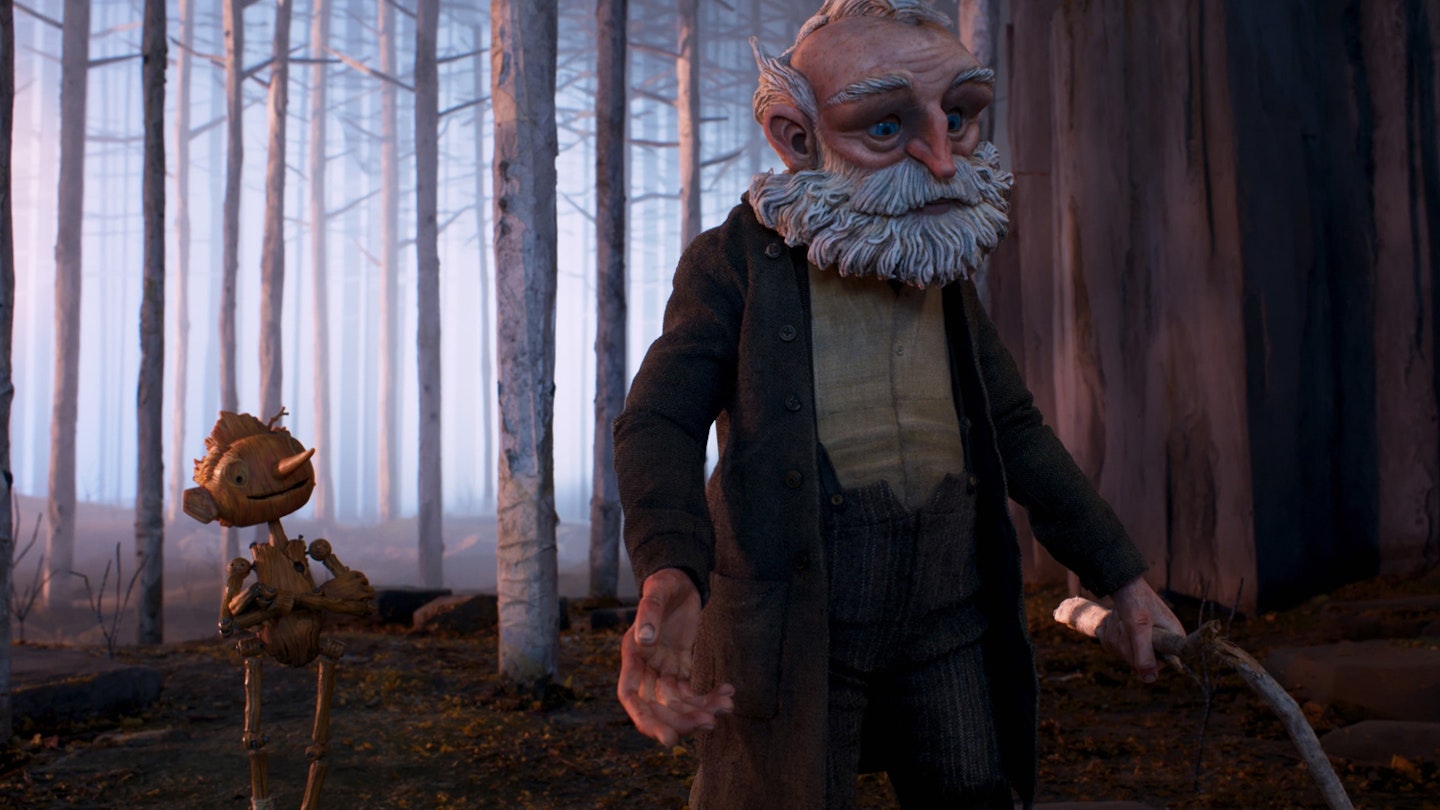 9 of 12
9 of 124. Guillermo del Toro’s Pinocchio (2022)
There are no nose-growing shenanigans here when we tell you that Guillermo del Toro’s Pinocchio might just be the best take on Carlo Collodi’s classic fairytale. A long-gestating passion project for del Toro, who lost both of the parents who inspired his love for the story before the film’s release, his take on the tale of everyone’s favourite little fire hazard departs from past tellings as it celebrates disobedience, confronts fascism head-on, and greets Death like an old friend. From the tragedy that befalls David Bradley’s Geppetto in the film’s Up-rivalling opening minutes, to cricket narrator Sebastian’s (Ewan McGregor) simply spoken closing words – “What happens happens, and then we’re gone” – del Toro takes us on the kind of darkly wonderful odyssey only the great Mexican fabulist could’ve helmed (there’s a reason his name’s in the title). His first animated feature, is a delicately hand-crafted, spellbinding affair – an all-singing, all-dancing, all-sobbing-by-the-end tale “of imperfect fathers, imperfect sons, love, and loss”. Pure poetry in (stop-)motion.
 10 of 12
10 of 123. The Shape Of Water (2017)
When you really get into it, it’s a minor miracle that The Shape Of Water won over the typically genre-averse Academy. This was del Toro’s big Oscar winner, bagging Best Picture and Best Director among other gongs – even though it’s an unabashed fantasy-romance in which a woman lusts after a cat-murdering, egg-chomping, fish-man. The director’s love affair with monster movies reached its culmination here – turning the Creature From The Black Lagoon into an alluring romantic lead, and having him slowly build a connection with Sally Hawkins’ non-verbal cleaning lady Elisa in a top-secret 1960s government lab. The outlandish premise is grounded in a deep well of sincerity, heart-aching performances, and a genuine love of the strange and the beautiful – del Toro using this most tender of tentative love stories to explore notions of otherness, colonialism, and human cruelty. Sumptuous from start to finish, with a swooning score from Alexandre Desplat, it’s tough not to be swept away by The Shape Of Water – a fantasy so alluring, even Oscar got on board.
 11 of 12
11 of 122. The Devil’s Backbone (2001)
Scarred by his torrid time working on Mimic, and by the kidnapping of his father in 1997, del Toro – in desperate need of a chance to work on something personal without compromise – swerved Hollywood and returned to his artistic roots. Set during the dying days of the Spanish Civil War, del Toro’s third feature – which he describes as Pan’s Labyrinth’s “Masculine brother” – is at once an achingly gorgeous Gothic romance and a potent political allegory. Taking place in an orphanage with an unexploded bomb in its courtyard, secrets buried within its walls, and a spectral child trapped at its centre, his characteristically poetic take on a ghost story starts and ends with a simple question; “What is a ghost?” Though quiet moans and distorted faces present us with familiar signifiers of the restless dead, as young orphan Carlo (Fernando Tielve) uncover his new home’s dark past, we’re invited to consider whether ghosts are just the dead that still appear living, or whether perhaps any tragedy “doomed to repeat itself time and again” – war, abuse, fascism – invariably makes ghosts of us all. The sodden, sunken eyed visage of Santi and that late-night water run have landed this on many “Greatest Horror Film of All Time” lists. The truth is, it’s one of the all-time great films, period.
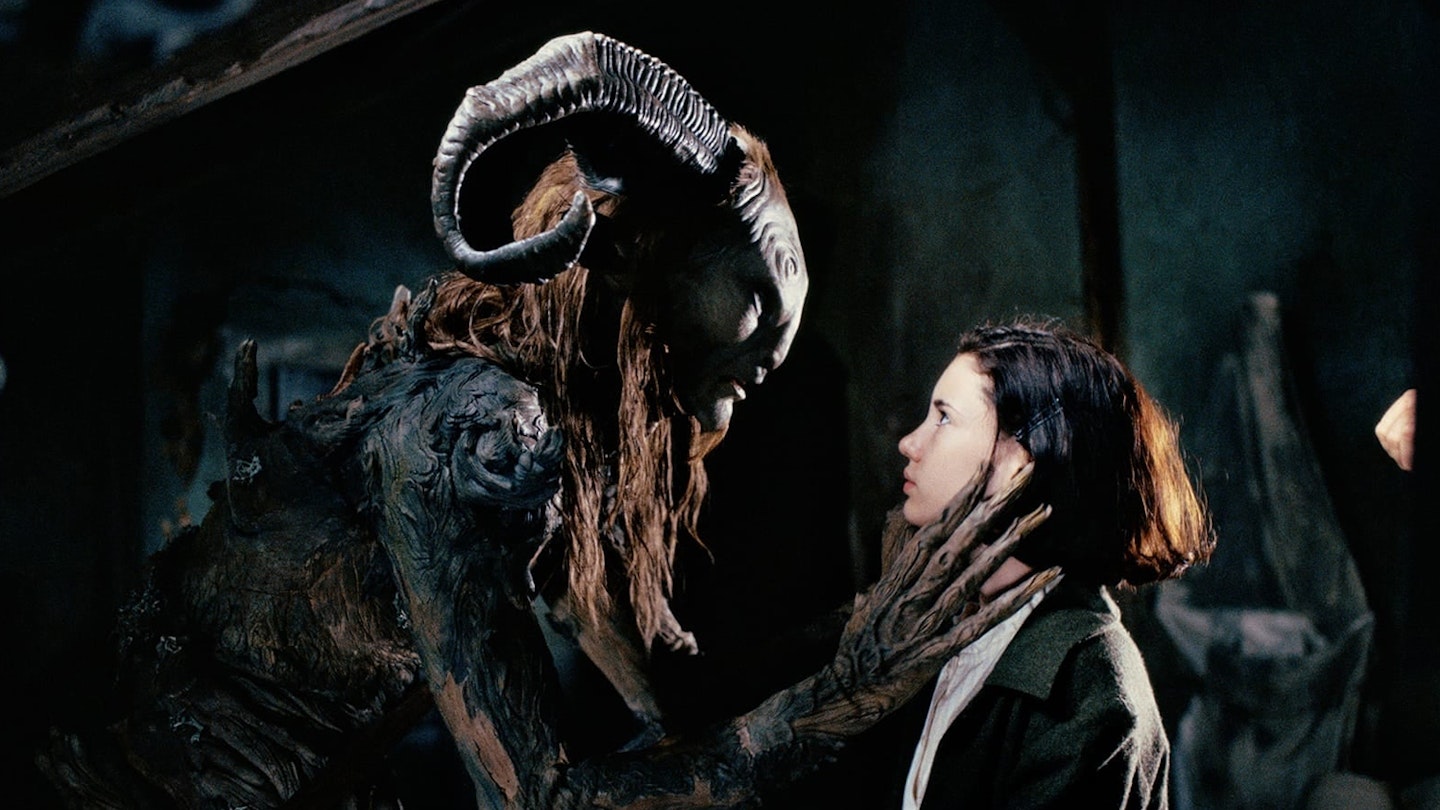 12 of 12
12 of 121. Pan’s Labyrinth (2006)
After years of making intimate fantasy-horrors and big-budget creature features, everything del Toro had worked towards in his first five films coalesced into Pan’s Labyrinth – a towering, terrifying, touching fairytale both brutal and beautiful, richly imaginative and gorgeously realised. Its dual narrative centers on Ivana Baquero’s Ofelia – a 10-year-old girl living in Franco’s Spanish dictatorship under the regime of her violent, fascist step-father Captain Vidal (a formidable Sergi López). By day, she cares for her ailing pregnant mother and avoids domestic dangers – but in another world, she is tasked by Doug Jones’ creaking faun with completing three monstrous missions to become immortal and return to her rightful place as the reincarnated ruler of a sweeping fantasy kingdom. From there, it’s all fairy-chomping frights and giant gelatinous toad face-offs as the imaginative realm proves just as dangerous as the real world. This is a terribly tragic story, with wince-inducingly painful moments and heartache at its core – but it’s so stunningly told, so richly imaginative, with glimmers of such hard-fought hope, that it’s hard not to be drawn back to the heart of the labyrinth over and over and over again.
